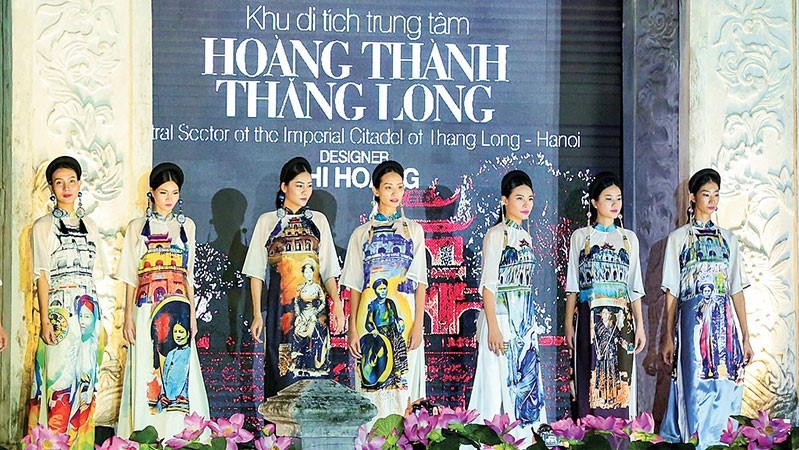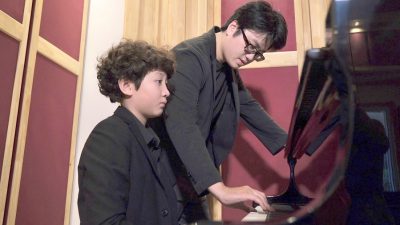
|
NDO – In late June, a special show of more than 1,000 Ao Dai (Vietnamese traditional long dresses) patterns, entitled “Ao Dai – Vietnam’s cultural heritage”, was held at the Van Mieu – Quoc Tu Giam (Temple of Literature) in Hanoi. |
|
A few days before, the first national conference on this special costume took place in Hanoi. These positive moves show Vietnam’s determination to have Ao Dai recognized as a world heritage item honoured by UNESCO. The need for a kind of dress that symbolises the elegant beauty of Vietnamese women is not only the aspiration of the whole community but also needed to define its global role. Unnamed heritage There is an interesting statistic that out of the 13 Vietnamese intangible cultural heritage items recognised by UNESCO, seven were associated in some way with the appearance of Ao Dai, including Xoan singing (a folk music genre in Vietnam’s northern midland province of Phu Tho), quan ho (love duet singing), ca tru (ceremonial singing), Nghe Tinh Vi-Giam folk singing, nha nhac cung dinh Hue (Hue Royal Court Music), don ca tai tu (southern folk music) and the Mother Goddesses of the Three Realms or Palaces. However, it is easy to affirm that Ao Dai has been made a default by the community as a typical costume representing Vietnamese culture. In popular languages like English, the phrase “Ao Dai” has no equivalent meaning. This means that this kind of costume has been automatically considered by international community as a traditional costume of Vietnam. At present, Ao Dai has not had a title corresponding to its value through legal documents and decisions. That story has been always “reheated” again whenever the community found a few cases of Ao Dai of other origins at museums and fashion runways in the world. In the context that Vietnam could not register the intellectual property of Ao Dai at the World Intellectual Property Organisation (WIPO) because the registration is not allowed for works belonging to a specific individual, the announcement of Ao Dai as a national dress or a heritage of the Vietnamese people is the most reasonable way to go about this. In fact, Ao Dai has also had several missed opportunities to have that. Six years ago when the first museum on Vietnamese Ao Dai was inaugurated in Ho Chi Minh City, the locality enthusiastically proposed the compilation of a dossier seeking the recognition of Ao Dai as a national intangible cultural heritage. A year later, the city’s tourism sector proposed taking March 8 as “Ao Dai day”. However, these ideas have not come to fruition due to several reasons, including the view that Ao Dai should be a common heritage of all provinces and cities, not a specific locality. Also in 2014, the project of building a State Formal Uniform was launched and implemented by the Department of Fine Arts, Exhibition and Photography. In essence, that was the successor of a project to build the Vietnam National Apparel proposed in 1990 but was not implemented. It is worth mentioning that whether it is a formal uniform (used in State and diplomatic ceremonies) or as national apparel, Ao Dai is always the first name mentioned by the public. For example, when consulting experts, the Department of Fine Arts, Exhibition and Photography reached 100% consensus on choosing Ao Dai as the formal uniform for women. However, the project has not been completed and approved because there was no consensus related to the formal uniform for men. In addition, regulations on the recognition and approval for national apparel and cultural symbols were not clearly decentralised. And so, until 2019, Ao Dai still lacked a “birth certificate” right in the country it was born. Source: Nhan Dan Online |

